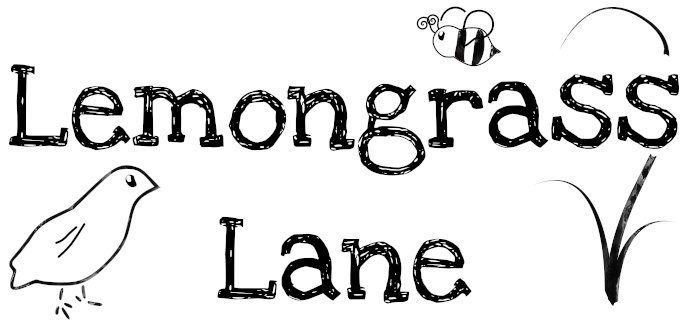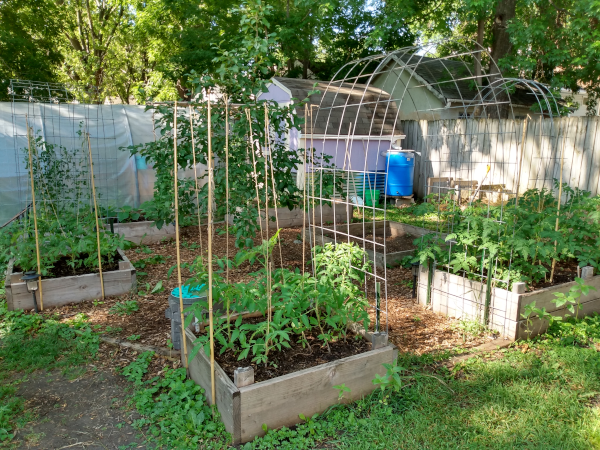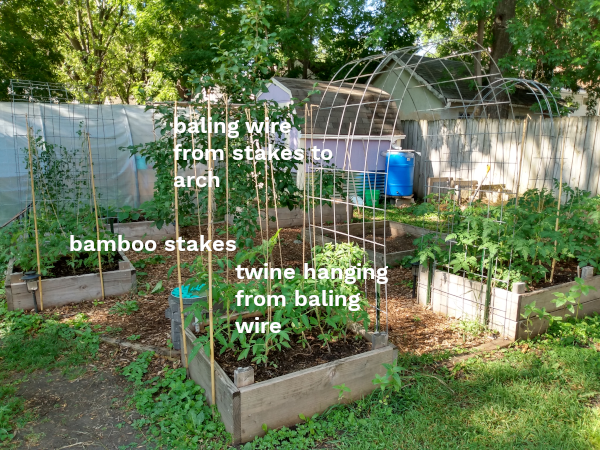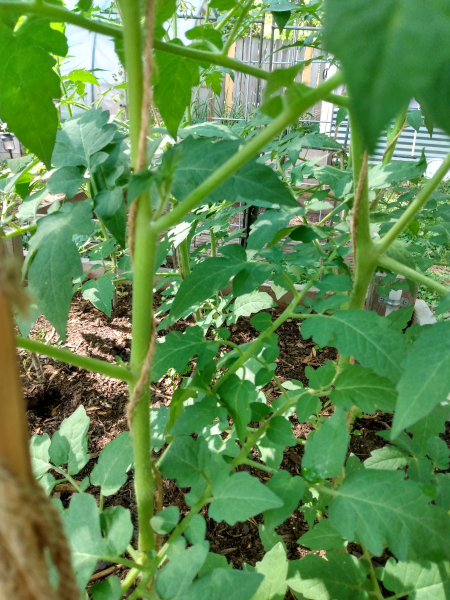Our favorite variety of tomato is the Chadwick Cherry. It has been a regular in my garden from year one. The tomatoes are huge, by cherry tomato standards. They are robustly flavorful, and the plants produce prolifically. This is an indeterminate variety. The vines grow all season, and they produce tomatoes for most of the season.
Last year, I decided on the Hungarian Heart as another mainstay. These produce gigantic oxheart tomatoes, if a little later than the cherries. They are also an indeterminate variety, and they have done well in our setting.
This year, I’ve added Bonny Best to the garden. It’s an old-fashioned and indeterminate variety, and judging from how it has started, I have high hopes for also making it a staple.
We love tomatoes, and we eat a lot of them.
Since each of the varieties I grow is indeterminate, and since I can’t bring myself to change that, I’ve had to find better ways to support the vines. The first way was to put cattle panel archways in between some of the raised garden beds. That has worked great. The vines grow up and over, and the tomatoes are easy to manage and harvest.
This year, I planted one full-sized bed with tomatoes, and two half-sized beds. This means that the tomatoes aren’t only along the archways. Which means I had to look for a way to train the vines up, and then over to the arches. Here is that setup.
I stuck some old bamboo stakes in the ground, opposite the archways, and attached a line of baling wire from the top of each stake to the arch. I hung a piece of twine from the baling wire to the base of each tomato plant. The pieces of twine are somewhat longer than just to the base, as I wanted some play in them at first. The tomato plants are wound around the twine as they grow. I plan to train them towards the archways once they reach the wire.
Is there a more elegant way to do this than bamboo and baling wire? Yes. But I like to use what’s on hand. Especially if it’s going to go to waste otherwise.
I grew all of our tomatoes from seed, and started them way to early this year. They still came through, and they look so healthy! Part of the reason is likely that I gave them proper spacing this year, whereas I overcrowded them in each of the previous seasons. I also added some bone meal when I transplanted them. But keeping them supported, off the ground, is a must for healthy, non-fungusy plants.



